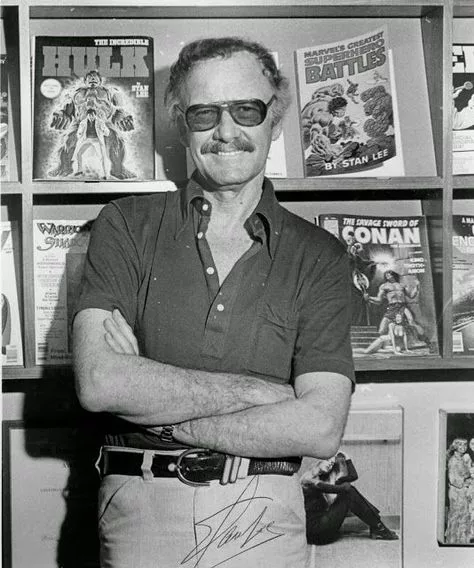This year we not only commemorate the anniversary of the outbreak of World War II. 2019 is also the 85th birthday of Donald Duck, 80th anniversary of Batman, as well as the "eight nozzles" of Marvel Comics.
In connection with these anniversaries, we would like to introduce you to the beginnings of the present comic book giant, which changed the image of pop culture forever. His first steps coincided with the bloodiest conflict in history.
Until 1939
When we talk about comics, it is worth bearing in mind that researchers and fans of pictorial stories use the periodization proposed by Steve Geppi. The beginning of the birth of superheroes is considered the so-called Golden Age, however, several decades earlier it is called the Platinum Era. What’s so special about it? Were it not for this period, and especially its last years, we would never really admire the adventures of Superman or Spider-Man.
The 1930s became a milestone in the issue of publishing picture stories with “t-shirts”. The demand for above-average characters became enormous, and this in turn contributed to the mass emergence of large comic book publications. One great example of someone who has sensed the demand for superheroes is entrepreneur Major Malcolm Wheeler-Nicholson. In 1935, he appeared on the American market with his publishing house National Allied Publication, launching New Fun magazines : The Big Comic Magazine # 1, New Comics (later transformed into the Action Comics series ) and Detective Comics , which he published in 1937. foundations for changing the name of the company. Its abbreviation, DC, is still in use today.
Thus ended the so-called Platinum Era – the foundation of today’s American comics.

Marvel Science Stories
The next Golden Age, according to chronology, is the “era” of the birth of the greatest, most powerful and courageous figures of culture – superheroes. The closest American history was the motive that drove the creators to create such icons. The Great Depression that preceded the war and the ensuing economic collapse caused legal chaos and increased crime in the streets. The US has evolved into one big arena to fight such gangsters as John Dillinger, “Pretty Boy” Floyd, Bonnie and Clyde and “Baby Face” Nelson. Despite the end of the crisis in 1933, its effects were felt right up to the first days of the war. In order to reach the recipient of the comic book, it was decided to raise his spirits and thus introduce him to potential watchdogs.
As it turned out later, the war became a phenomenon that only intensified the need for superheroes to appear in the human consciousness. Before she got mad, however, Martin Goodman began to take his first steps with leotards. Martin – the son of Russian immigrants, who in 1933, at the beginning of his career, started publishing cheap magazines at 15 cents apiece. With time, he achieved financial stability, and by 1939 he had already published three magazines. One of them (and the least profitable) was Marvel Science Stories . Goodman liked the keyword from it enormously and in the future it became the basis for the name of the second comic book empire in the USA – Marvel Comics .
Earlier, however, in 1939, Goodman founded Timely Comics, which he managed from 330 West 42nd Street in New York. At the company, he officially served as editor-in-chief and business director, while his brother Abraham Goodman was to handle other matters related to the publishing house. The first comic book magazine to be published by Timely Comics was Marvel Comics . It featured an android called Human Torch by Carl Burgos and the first comic book anti-hero – Namor the Sub-Mariner by Bill Everett. The sale of the debut issue turned out to be a great success, reaching 800,000 copies.
While the first human torch was not associated with the Fantastic Four and did not gain great popularity, the impetuous prince of Atlantis – the son of man and the underwater queen – was really appreciated. Created twenty-two years before the official launch of the Marvel Comics Universe, Namor is not only the first invented mutant, but above all a superhero, and even an anti-hero, because his approach, both then and now, is far from the Avengers. Repeatedly claiming that “surface people” (as he calls humans) are a threat, he attacked the mainland, so on the pages of Marel Mystery Comics No. 8 he clashed with Human Torch in the first Marvel crossover! Well, the war made Namor himself understand that his worst enemy is the Nazis.

A legend is born
The conflict unleashed by Hitler created a need for a new hero close to his soldiers who would protect America as well as keep the spirits of the nation fighting against the Nazis. In 1941, Timely Comics published the first notebook dressed in national colors as Steve Rogeres, or Captain America – a super soldier subjected to genetic modifications that gave him superhuman strength. The idea of creating such a character came up with Joe Simon and Jack Kirby – the legend of American comics. The first Captain America comics were set in the real world, where he fought the Axis powers and their spies in the US, filled with ideas of freedom.
His stories featured people who played an important role in the course of history at this point in history: President Franklin D. Roosevelt, FBI director J. Edgar Hoover, and Adolf Hitler and Hermann Göring. Weaving real people into the comic book plot was aimed at achieving a propaganda dimension, but with time it became a valuable collection of historical information by showing us what people were really important to global politics at that time. The birth of Captain America is also associated with the beginning of the work of the Marvel icon – Stanley Libera, commonly known under his comic book pseudonym “Stan Lee”. He was the nephew of the Timely Comics Distribution Manager- Robbie Solomon and a cousin of Goodman’s wife. Stanley, after a short conversation with the creators of the comic book about the super-soldier, was hired to the editorial office, initially as the person responsible for applying ink on the frames.

House of Ideas
The aforementioned three superheroes became the famous Marvel trio related to the period of World War II. However, these are not the only characters that made their debut then. To this day, we can see in various staff appearances and flashbacks of such veterans as Whizzer, Miss America, Destroyer, or the original Vision.
Over time, Goodman adopted a new business strategy of publishing his various magazines and comics by many of the publishing houses under his management. One of the companies thanks to which their stories were published by Timely Comics was named Marvel Comics after its Marvel Mystery Comics magazine . Over time, the name itself became so fond of the editor-in-chief that some other comic book covers, such as All Surprise Comics, were renamed “A Marvel Magazine” many years before Goodman formally adopted the name in 1961, naming the main publishing house under which joined the rest of the smaller ones in the branches.
But that’s a completely different story …
Bibliography:
Cichoń A., Historia comiksu , Rzezawa 2006.
Howe S, The amazing history of MarvelComics, Krakow 2013.

